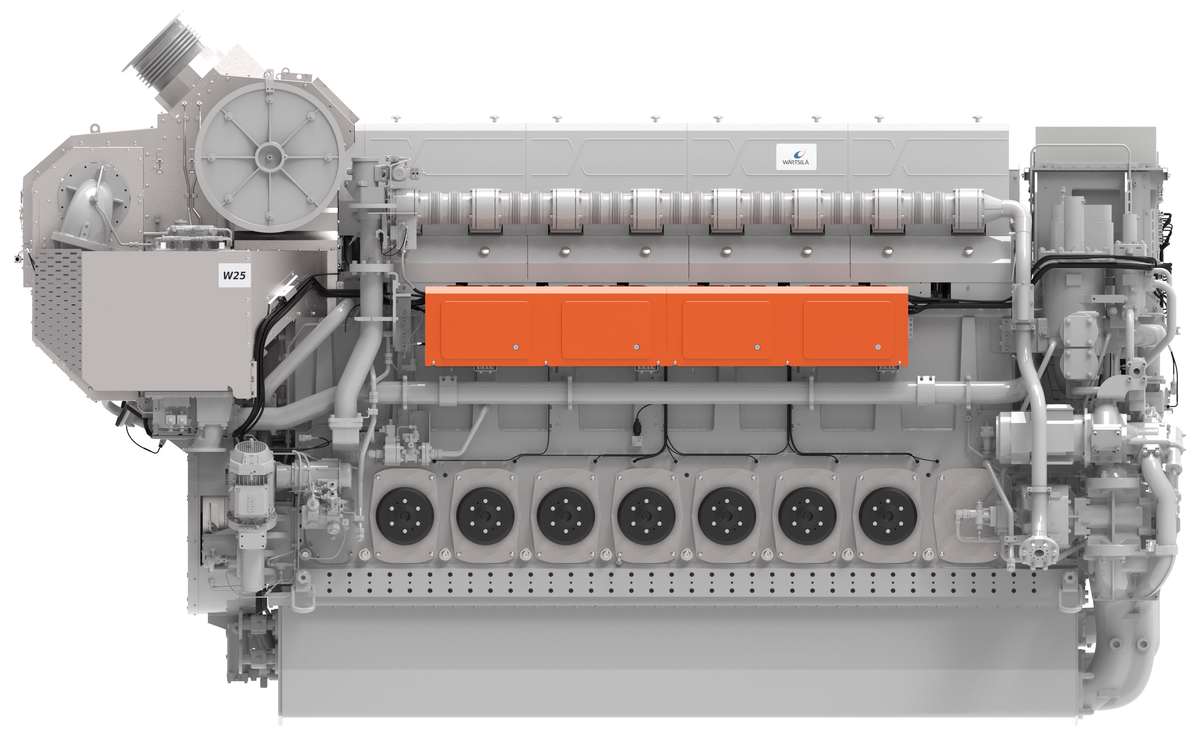The Week in Alternative Fuels 17 November 2023
Technology has matured well enough to enable ships to operate on future fuels. But a slow rollout of new policies remains a major roadblock for alternative fuel adoption.
 PHOTO: Model of Wärtsilä's multi-fuel engine that can also run on ammonia. Wärtsilä
PHOTO: Model of Wärtsilä's multi-fuel engine that can also run on ammonia. Wärtsilä
Ships need purpose-built engines to run on alternative marine fuels like ammonia, methanol and hydrogen. These fuels are chemically different from fossil fuels and require different engine components, piping and control systems than conventional engines. While developing engines to run on these fuels can be a lengthy and expensive process, some companies have succeeded in doing so.
Methanol engines are already available commercially, both as two- and four-stroke engines. Methanol engine orders have mostly been for newbuilds, but engine maker MAN Energy Solutions and others have also started offering them as retrofits.
This week, US-based engine maker Cummins announced it is working on a methanol conversion kit to retrofit existing engines. Upon completion in 2025, the conversion kit will be retrofitted on Ocean Infinity's offshore service vessels. The first trials will be conducted at the Scottish Port of Aberdeen with methanol and hydrotreated vegetable oil (HVO) as fuels. Proman will supply the methanol.
Tailor-made ammonia and hydrogen engines are also becoming a reality.
Lloyd’s Register (LR) has granted a "type approval" for a dual-fuel hydrogen combustion engine, which validates its safety and performance. Marine engineering firm CMB.TECH and engine manufacturer ABC Engines formed BeHydro to develop the engine. This four-stroke engine runs on 85% hydrogen gas and 15% conventional fuel.
Last week saw the first wave of confirmed orders for ammonia-fuelled vessels, a sign that the maritime sector has officially embraced this fuel. This commitment was reaffirmed this week by Finnish engine maker Wärtsilä, by unveiling the industry's first ammonia-fuelled four-stroke marine engine. Apart from ammonia, it can be fuelled by diesel, LNG and biofuels. Wärtsilä claims the engine can reduce greenhouse gas (GHG) emissions by over 70% compared to conventional oil-fuelled engines, and said it will require some pilot fuel to get going.
However, it should be noted that, at present, only four-stroke variants of ammonia and hydrogen engines are available. A four-stroke engine can power smaller feeders, ferries or cruise ships. In contrast, larger oil tankers and bulk carriers are typically equipped with two-stroke engines. Wärtsilä plans to launch an ammonia-fuelled two-stroke engine by 2025, but has not made any announcements about hydrogen-fuelled two-stroke engines.
Technology is advancing faster than ever to enable use of alternative fuels on ships, but the slow pace of policy implementation remains a major barrier, DNV’s director of energy transition outlook, Sverre Alvik argued at a DNV webinar. The classification society’s chief executive of energy systems, Ditlev Engel, echoed this view. He called for policymakers to work on implementing measures at COP28 this month to speed up the global green energy transition.
By Konica Bhatt
Here is our selection of top five alternative fuels stories from this week:
BeHydro gets LR’s ‘type approval’ for dual-fuel hydrogen combustion engine
Cummins to develop methanol-retrofit for marine engines
Wärtsilä pioneers bunkering transition with first ammonia-fuelled ship engine
Viasea receives government funds to construct two hydrogen-powered ships





